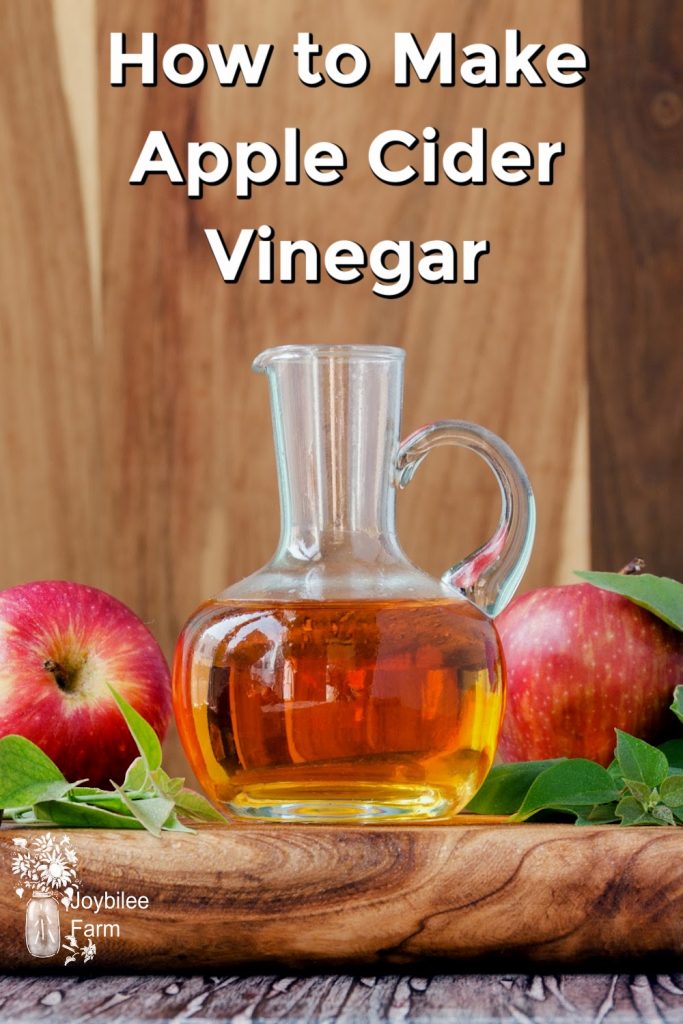Are you curious about the magic brew that is apple cider vinegar? Well, you're in the right place! This easy guide will walk you through the delightful process of making your own apple cider vinegar at home. Not only is it a fun and rewarding project, but you'll also discover the numerous health benefits that come with this tangy elixir. So grab your apples, and let’s dive into the world of apple cider vinegar!
Benefits of Apple Cider Vinegar

Apple cider vinegar (ACV) isn't just a kitchen staple; it’s packed with an array of benefits that can enhance your health and wellness. Here’s a rundown of some of the most noteworthy advantages:
- Rich in Nutrients: ACV is full of vitamins and minerals, including B vitamins, vitamin C, and antioxidants. These can help bolster your immune system and promote overall health.
- Supports Weight Loss: Many people use ACV as a natural appetite suppressant. Incorporating it into your diet can help you feel fuller, potentially leading to weight loss.
- Improves Digestion: ACV is known to aid in digestion. A tablespoon mixed with water before meals may help your body break down food more effectively.
- Regulates Blood Sugar Levels: Some studies suggest that ACV may assist in stabilizing blood sugar levels, making it a popular choice for those managing diabetes.
- Boosts Heart Health: ACV has been shown to help reduce cholesterol levels and lower blood pressure, contributing to improved heart health.
Aside from these health benefits, apple cider vinegar can also be used as a natural remedy for various ailments like sore throat, skin issues, and even as a hair conditioner. So whether you’re using it in recipes, for wellness benefits, or just for fun, apple cider vinegar is truly a powerhouse ingredient!
3. Ingredients Needed

When it comes to making your own apple cider vinegar at home, you don’t need a lot of fancy ingredients. The beauty of this project is in its simplicity! Here's what you'll need:
- Apples: About 6-10 apples will do the trick. You can use any variety, but sweeter apples like Fuji or Gala generally yield better results.
- Water: Filtered water is best, around 4 cups or enough to completely cover the apples in your jar.
- Sugar: 1 cup of granulated sugar is needed to kickstart the fermentation process. This feeds the natural yeast present on the apple skins.
- A clean glass jar: A quart-sized jar works well. Just make sure it’s thoroughly cleaned to avoid any harmful bacteria!
- Cheesecloth or a coffee filter: To cover the jar, allowing air to flow while keeping unwanted insects out.
These ingredients form the foundation of your homemade apple cider vinegar. Remember, the quality of your apples can greatly influence the flavor of your finished product, so choose wisely!
4. Step-by-Step Instructions
Now that you have all your ingredients, let’s dive into the step-by-step process of making apple cider vinegar! Don't worry, it’s super easy and quite fun. Just follow these simple steps:
- Prepare the Apples: Start by washing your apples thoroughly. Cut them into quarters, leaving the skins and cores intact. This is where the natural yeasts live!
- Mix the Ingredients: In a large glass jar, combine the quartered apples and sugar. If you prefer a sweeter cider vinegar, add a bit more sugar. Pour in enough filtered water to cover the apples completely, leaving some space at the top.
- Cover the Jar: Use cheesecloth or a coffee filter to cover the mouth of the jar, securing it with a rubber band or string. This allows air to circulate while keeping out dust and insects.
- Fermentation: Place the jar in a warm, dark place (around 60-80°F) for about 3 weeks. Stir the mixture every few days to help with the fermentation process.
- Strain and Second Fermentation: After 3 weeks, strain out the apple pieces using a fine mesh strainer. Pour the liquid back into the jar and cover it again. Let it ferment for another 3-4 weeks, tasting occasionally.
- Bottling: Once it reaches your desired sourness, transfer your apple cider vinegar into a clean bottle with a tight cap. Store it in a cool, dark place!
And there you have it! With a little patience, you’ll soon be enjoying your own homemade apple cider vinegar, perfect for dressing salads or as a health tonic. Cheers to your kitchen adventures!
Common Mistakes to Avoid
Making apple cider vinegar at home can be a fun and rewarding project, but it’s easy to run into some hiccups along the way. Here are some common mistakes that can sabotage your efforts and how to avoid them:
- Using the Wrong Apples: Not all apples are created equal. For the best flavor, opt for a mix of sweet and tart apples. If you stick with only one type, you might end up with a bland vinegar.
- Skipping the Hygiene: Cleanliness is crucial in the fermentation process. Make sure all your equipment is sanitized to prevent unwanted bacteria from spoiling your apple cider vinegar.
- Not Using Enough Sugar: The natural sugars in apples are vital for fermentation, but sometimes they aren’t enough. If the mixture isn’t fermenting as expected, try adding more sugar or using raw honey.
- Rushing the Process: Fermentation takes time. Don’t rush it! If you’re impatient and try to bottle your vinegar too soon, it may not have developed that perfect tangy flavor.
- Ignoring the Temperature: Find a cozy spot for your brew. Apple cider vinegar needs a warm environment to ferment properly, typically between 60-80°F (15-27°C).
By steering clear of these common pitfalls, you’ll set yourself up for vinegar-making success!
Storage Tips
Once you've successfully made your apple cider vinegar, you’ll want to store it properly to maintain its quality and flavor. Here are some handy storage tips:
- Choose the Right Container: Glass containers are preferable for storing apple cider vinegar. Avoid plastic, as it can leach chemicals into the vinegar.
- Keep it Cool and Dark: Store your apple cider vinegar in a cool, dark place. Light and heat can degrade its quality over time.
- Seal It Tight: Ensure the lid is tightly sealed to prevent contamination. A loose lid can introduce unwanted bacteria.
- Check for Sediment: It's normal to see some sediment at the bottom of your vinegar bottle. If you see this, don’t worry! Just give it a little shake before use.
- Use Within a Year: For the best flavor and quality, try to use your apple cider vinegar within 1 year of making it. Although it doesn't necessarily spoil, its taste can change over time.
With these storage tips, your homemade apple cider vinegar will remain fresh and flavorful, ready for your recipes and health remedies whenever you need it!
Easy Guide to Making Apple Cider Vinegar
Making your own apple cider vinegar (ACV) at home is a simple and rewarding process. Not only is it delicious and versatile in cooking, but it also offers numerous health benefits, such as aiding digestion and boosting immunity. Here’s a step-by-step guide to creating your own ACV.
What You'll Need:
- Apples (ideally organic) - about 10-12
- Water - enough to cover the apples
- Sugar - 1 cup per gallon of water (or to taste)
- A clean glass jar - preferably 1-gallon size
- Cheesecloth or a coffee filter - to cover the jar
- Rubber band or string (to secure the cloth)
Steps to Make Apple Cider Vinegar:
- Prepare the Apples: Wash and cut the apples into small pieces, including the cores and peels.
- Mix and Fill: Place the apple pieces in the glass jar and cover them with water, leaving some space at the top.
- Add Sugar: Dissolve sugar in a small amount of water and add it to the jar. This will help kickstart the fermentation process.
- Cover and Store: Cover the jar with cheesecloth or a coffee filter and secure it with a rubber band. Store it in a dark, warm place (around 60-80°F or 15-27°C).
- Fermentation: Let the mixture sit for about 3-4 weeks, stirring it occasionally. You will notice bubbles forming as fermentation occurs.
- Strain and Store: After 3-4 weeks, strain out the apple solids and pour the liquid back into a clean jar. Cover it again and let it ferment for an additional 3-4 weeks.
Tips for Best Results:
| Tip | Description |
|---|---|
| Use Organic Apples | They contain natural yeasts that enhance fermentation. |
| Avoid Metal | Use glass, wood, or food-safe plastic for containers. |
| Be Patient | The longer you let it ferment, the stronger the flavor. |
In conclusion, making apple cider vinegar at home is an enjoyable process that yields delicious results. With just a few simple ingredients and some patience, you can create a natural and tangy addition to your kitchen. Enjoy your homemade ACV in salad dressings, marinades, or as a health tonic!










